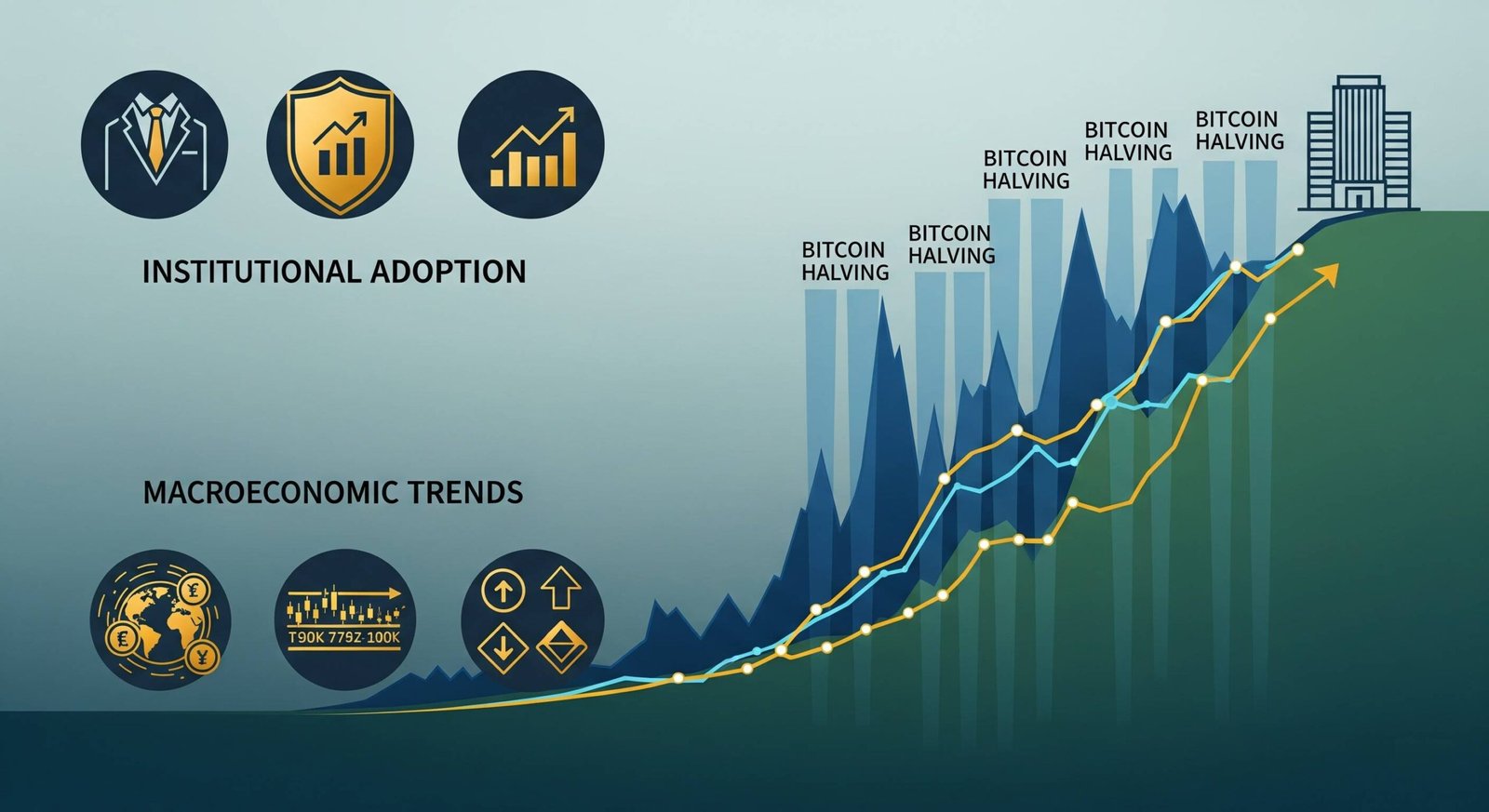
Bitcoin ETFs in 2025: What’s Driving Institutional Demand?
The crypto landscape in 2025 is witnessing a profound transformation, with Bitcoin Exchange-Traded Funds (ETFs) emerging as a pivotal entry point for institutional investors. What was once viewed as a speculative asset class is now being embraced by pension funds, hedge funds, family offices, and even sovereign wealth funds — largely thanks to the rise of regulated Bitcoin ETFs.
So, what’s fueling this surge in institutional interest? Let’s explore the key drivers behind this evolving trend.
1. Regulatory Clarity and SEC Approvals
The approval of spot Bitcoin ETFs by the U.S. Securities and Exchange Commission (SEC) in early 2024 marked a significant milestone. Unlike futures-based ETFs, spot Bitcoin ETFs directly track the price of Bitcoin, offering a more efficient and transparent way to gain exposure to the asset.
In 2025, this regulatory green light has removed much of the uncertainty that kept institutional investors on the sidelines. It has also paved the way for the launch of additional ETFs in regions like Europe, Canada, and Asia, all reinforcing the global legitimacy of Bitcoin as an asset class.
2. Portfolio Diversification and Inflation Hedge
As traditional markets show increased volatility and inflation remains a persistent concern globally, institutional investors are looking for non-correlated assets to diversify portfolios. Bitcoin, often referred to as “digital gold,” has gained favor due to its scarcity (only 21 million BTC will ever exist) and resistance to monetary debasement.
ETFs offer a convenient, regulated vehicle for adding Bitcoin to institutional portfolios without the complexities of custody or private key management.
3. Infrastructure Maturity and Custodial Safety
One of the biggest historical concerns for institutions has been custody. But in 2025, the infrastructure for securely holding Bitcoin has significantly matured. ETF providers now partner with qualified custodians such as Coinbase Custody, Fidelity Digital Assets, and BitGo, offering insurance-backed, institutional-grade storage.
This infrastructure maturity instills confidence and allows risk-averse institutions to participate without direct exposure to wallet security or compliance risks.
4. Increased Liquidity and Tight Spreads
Bitcoin ETFs have improved market depth and liquidity by aggregating demand through traditional finance (TradFi) platforms. As these ETFs continue to trade on major exchanges like NYSE, Nasdaq, and LSE, they provide tight bid-ask spreads, allowing for easier entry and exit without significant price slippage.
This level of liquidity is essential for institutions that manage billions of dollars and cannot afford to impact market prices during trades.
5. Competitive Returns and Long-Term Growth Potential
Despite volatility, Bitcoin has consistently outperformed traditional assets like gold, bonds, and even tech stocks over the past decade. As ETFs democratize access, more fund managers are allocating a small portion (typically 1-5%) of their Alternative Assets bucket to Bitcoin.
Projections of Bitcoin reaching $150,000 or more by late 2025, fueled by halving cycles and supply scarcity, make it an attractive long-term bet for capital appreciation.
6. Client Demand and Fiduciary Responsibility
Institutional asset managers and financial advisors are increasingly facing pressure from high-net-worth clients and endowments asking for Bitcoin exposure through trusted investment vehicles. With ETFs available, they now have a fiduciary-compliant method to meet this demand while staying within regulatory bounds.
This “pull effect” is one of the strongest organic drivers of inflows into Bitcoin ETFs today.
7. Competitive Arms Race Among Asset Managers
Firms like BlackRock, Fidelity, Ark Invest, VanEck, and Invesco are now fiercely competing for market share in the crypto ETF space. This competition has led to lower fees, enhanced transparency, and innovative ETF products that appeal to a broader spectrum of institutional buyers — including ESG-focused funds and risk-managed strategies.
As of Q3 2025, some Bitcoin ETFs are even being bundled into multi-asset crypto indexes, further expanding their appeal.
What’s Next? Tokenization and Beyond
The success of Bitcoin ETFs in 2025 is just the tip of the iceberg. Many analysts believe this institutional acceptance will soon spill over into other areas like:
Ethereum and Solana ETFs
Tokenized bonds and real-world assets (RWAs)
DeFi-native ETF products
The convergence of blockchain, finance, and compliance is reshaping capital markets as we know them — and Bitcoin ETFs are leading the charge.
Final Thoughts
The rise of Bitcoin ETFs has legitimized cryptocurrency in the eyes of institutions and regulators alike. By reducing barriers to entry, improving security, and integrating into traditional financial ecosystems, Bitcoin is no longer just a speculative asset — it’s a strategic allocation for the modern institutional portfolio.
As we move deeper into 2025, one thing is clear: Bitcoin ETFs are not a trend — they’re the new standard.
MetaCryptoDesk will continue to cover these developments as they unfold. Subscribe to our newsletter for updates on institutional crypto adoption, ETF performance metrics, and more insights from the frontier of digital finance.



